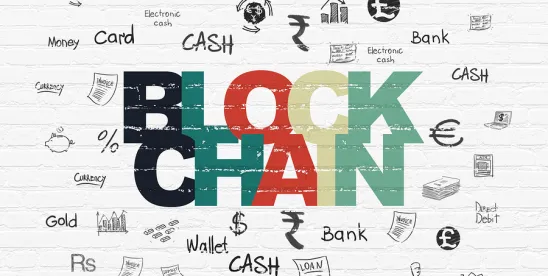Subscription-based services, embraced by the software industry as an alternative to traditional models of selling product, provide a steady income stream to providers. Software-as-a-Service, along with the related Platform-as-a-Service, Network-as-a-Service, and Infrastructure-as-a-Service models, provide benefits to customers by shifting maintenance responsibilities to the vendor and exchanging large capital expenses for lower subscription fees.
What is a Machine-as-a-Service Model?
Following in the footsteps of the software industry, capital equipment manufacturers are beginning to adopt Machine-as-a-Service ("MaaS") models, providing manufacturing equipment such as Computerized Numerical Control ("CNC") machines or automated manufacturing systems on a subscription basis.
Unlike a traditional leasing model with a fixed monthly or weekly payment, customers may make MaaS subscription payments based on usage or outcome, such as monthly payments based on the number of units produced.1 For example, in addition to conventional air compressor sales, Kaeser Compressors, Inc. now offers a MaaS compressed air service with a subscription fee for a fixed amount of compressed air.2 The equipment manufacturer takes on additional risk with the possibility that client needs and corresponding revenue may decline but may find a much broader market of willing customers, particularly for the newest or most advanced machines that would be very expensive outright purchases.
Blockchain for Asset Tracking
Asset tracking is crucial for running a successful MaaS-based business. Vendors may collect operational data from manufacturing machines, including hours of operation, units produced, and operating efficiency statistics or faults and use the data for both pricing calculations and maintenance purposes (such as identifying when preventative maintenance operations should occur). Blockchain may collect this data directly at the machine through integrated sensors to provide the parties with an immutable operational record. By utilizing blockchain technology, both the vendor and user can feel confident that operational numbers are accurate and secure.3
In some instances, companies may use smart contracts based on data recorded to the blockchain to automatically execute arranged payments as manufacturing thresholds are reached. For example, SteamChain’s Secure Transaction Engine for Automated Machinery ("STEAM") uses blockchain technology to generate tamper-free performance records that are accessible by both end users and vendors, and to execute payment transactions in real time.4 Pearson Packaging Systems uses STEAM to provide packing machines under a MaaS model, with clients providing payments per erected, sealed, or palletized case via smart contracts.5 By using blockchain for recording case counts and executing payment, the parties benefit from decreased human errors and increased transparency.
Automated Maintenance Requests via Smart Contracts
Companies can use smart contracts to automatically schedule maintenance for deployed MaaS machines. Because updated data and statistics for each machine are recorded to the blockchain ledger, companies can automatically monitor the performance of each machine. If efficiency degrades or other faults occur, a smart contract can dynamically generate a service request. For fee-based service agreements, smart contracts can also automatically process payments.6
A blockchain ledger provides a permanent and immutable record of maintenance history for the machine, which potential purchasers may find valuable when the vendor sells used capital equipment. Because each maintenance record is written to the ledger with a timestamp and that timestamp is encoded into each subsequent block, a bad actor would have difficulty faking records in case of missed maintenance windows.7
Dynamic Configuration Management
An end user may not want all of the available capabilities provided by a particular machine. Under conventional purchasing models, customers may have to purchase a more advanced or capable machine, at a correspondingly higher cost, in order to fulfill certain requirements, effectively buying “more machine” than they want. Conversely, if they cannot afford the capital expenditure, some customers will purchase less advanced equipment or equipment lacking desirable features. This may result in lower overall productivity and quality.8
Under a MaaS model, a vendor may deploy their most advanced machines to clients with one or more features disabled. Because the machines are connected to blockchain nodes for recording performance data, smart contracts may also be used to push configuration changes back to the machines. For example, a client may dynamically elect to enable a particular feature, and a smart contract will automatically process a payment or increased subscription fee and trigger the configuration change for the corresponding machine.9
Legal Issues Related to MaaS Models on Blockchain
When considering adopting a MaaS model supported by blockchain, companies will need to evaluate the accompanying legal issues, such as:
Automation. Because many decisions are made upfront for the structure of a MaaS model, and such decisions are executed by smart contracts, the parties will need to consider how to address changes to agreed-upon contract terms. For example, if a machine requests service but the customer would rather defer maintenance, this cannot be accomplished without cooperation from the vendor, as the maintenance is automatically ordered. This is an important consideration because customers likely will want to have the final say in requesting service as the payor, but the vendor will likely have service requirements that it will prefer to be automatically triggered. The parties will need to pay attention to whether a smart contract housed on blockchain has been programmed to be flexible or inflexible for tasks such as ordering maintenance.
Export Control. While dynamic configuration management can deselect certain features on a machine that is supported by blockchain, the parties will still need to comply with export control regulations and ensure that controlled technology is not being exported to a foreign country in violation of export control laws. Under current export control regimes, licensing authorities will evaluate the full capabilities of exported machines. The authorities are unlikely to grant licenses to export machines containing controlled technology that is not enabled, simply because a recipient could take steps to enable that technology. Unless capital equipment manufacturers program the blockchain solution to completely disable controlled functionality, it is unlikely that licensing authorities will relax export control regimes based solely on the adoption of a MaaS model.
“Right to Repair.” The “right to repair” movement in the U.S. is growing and gaining influence in the policymaking process. In July 2021, President Biden issued an executive order directing the Federal Trade Commission ("FTC") to issue rules to remedy “unfair anticompetitive restrictions on third-party repair or self-repair of items, such as the restrictions imposed by powerful manufacturers that prevent farmers from repairing their own equipment.”10 While subscription-based MaaS models supported by blockchain technology undoubtedly offer benefits to customers, they allow manufacturers to retain control over the equipment well after a customer purchases a subscription. Manufacturers and customers looking to avail themselves of MaaS arrangements must make clear to the FTC, and to policymakers writ large, that these arrangements are outside the scope of anticompetitive behavior that the July 2021 executive order is looking to prevent.
Uniform Commercial Code. Although a MaaS model is typically characterized as a subscription service, it would likely be subject to Article 2A of the Uniform Commercial Code ("UCC"), which defines a lease as “a transfer of the right to possession and use of goods for a term in return for consideration…”11 If the customer (lessee) defaults, the capital equipment manufacturer (lessor) will have all the remedies provided by Article 2A, including the right to recover the machine.12 The manufacturer may want to take a back-up security interest in the machine under UCC Article 9 and file a financing statement to ensure its right to the machine is public record. The manufacturer should consider whether to re-characterize the lease as a sale with retention of a security interest, particularly if the customer has a right to purchase the machine at the end of the term at a price that is reduced by all or some portion of the payments already made.
Click here to view Foley’s series of “Blockchain in Supply Chain” articles that delve into the basics of blockchain, the applications of blockchain in supply chain networks, and legal developments in the blockchain space.
1 Daniel Küpper et al., Blockchain in the Factory of the Future, BCG (July 15, 2019).
2 Ashley Ferguson, What is an IoT-Enabled Machine-as-a-Service, Losant (February 6, 2020); Sigma Air Utility: Air as a Service, Kaeser Compressors (last retrieved September 14, 2021).
3 Blockchain and the Making of Making of Machine-as-a-Service, iTMunch (April 17, 2019).
4 Stephanie Neil, Blockchain and the Making of Machine-as-a-Service, AutomationWorld (March 18, 2019); Using Machine Performance Data to Drive Value, SteamChain, (last retrieved September 14, 2021).
5 Machine-as-a-Service (MaaS), Pearson Packaging Systems (retrieved September 12, 2021).
6 Supra note 1.
7 Id.
8 Supra note 3.
9 Supra note 1.
10 Michael J. Walsh et al., Right to Repair and the Biden Competition EO – What Manufacturers Need to Know, Foley & Lardner LLP (July 14, 2021).
11 U.C.C. §2A-103(j)
12 U.C.C. §2A-523




 />i
/>i

